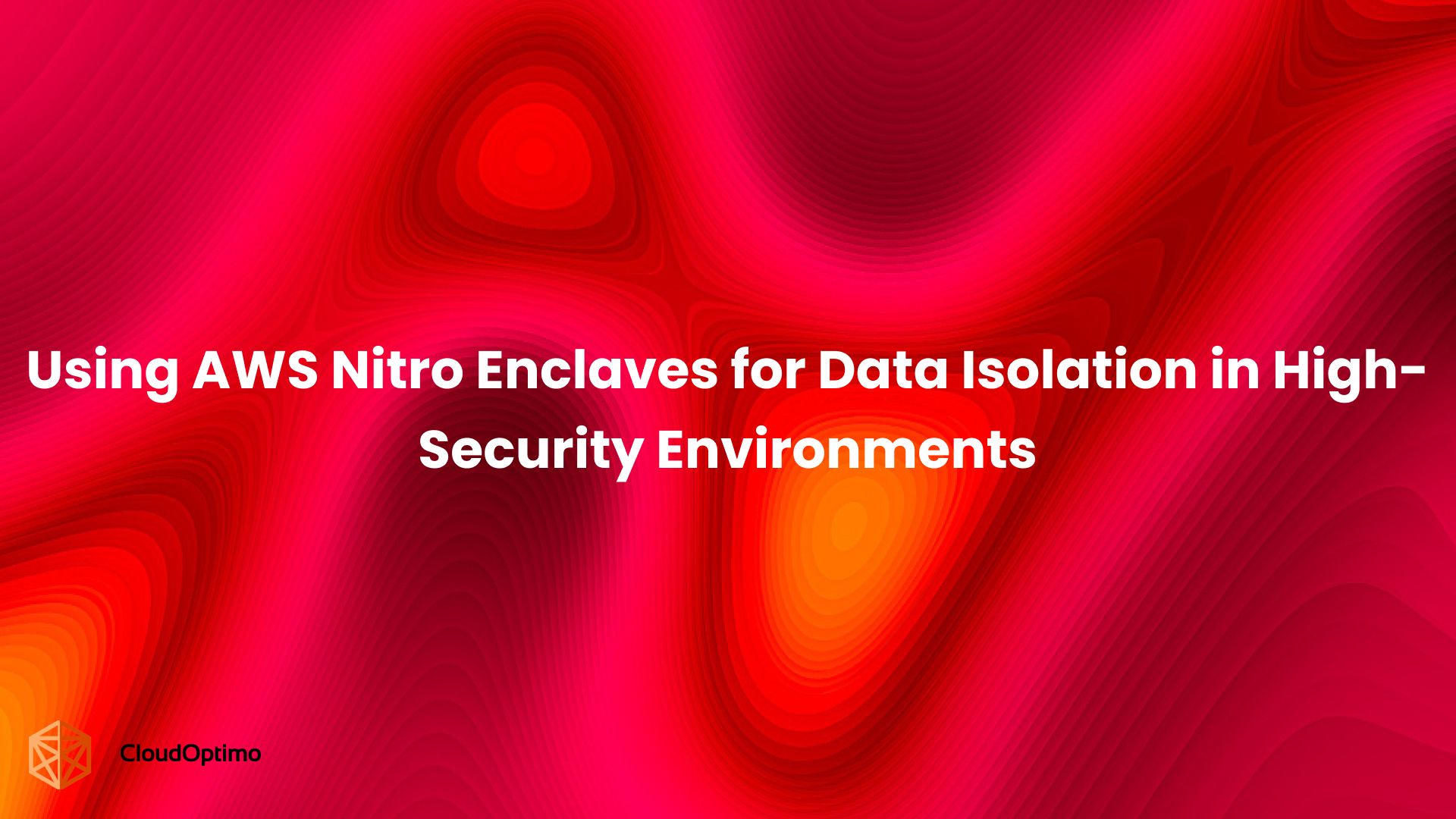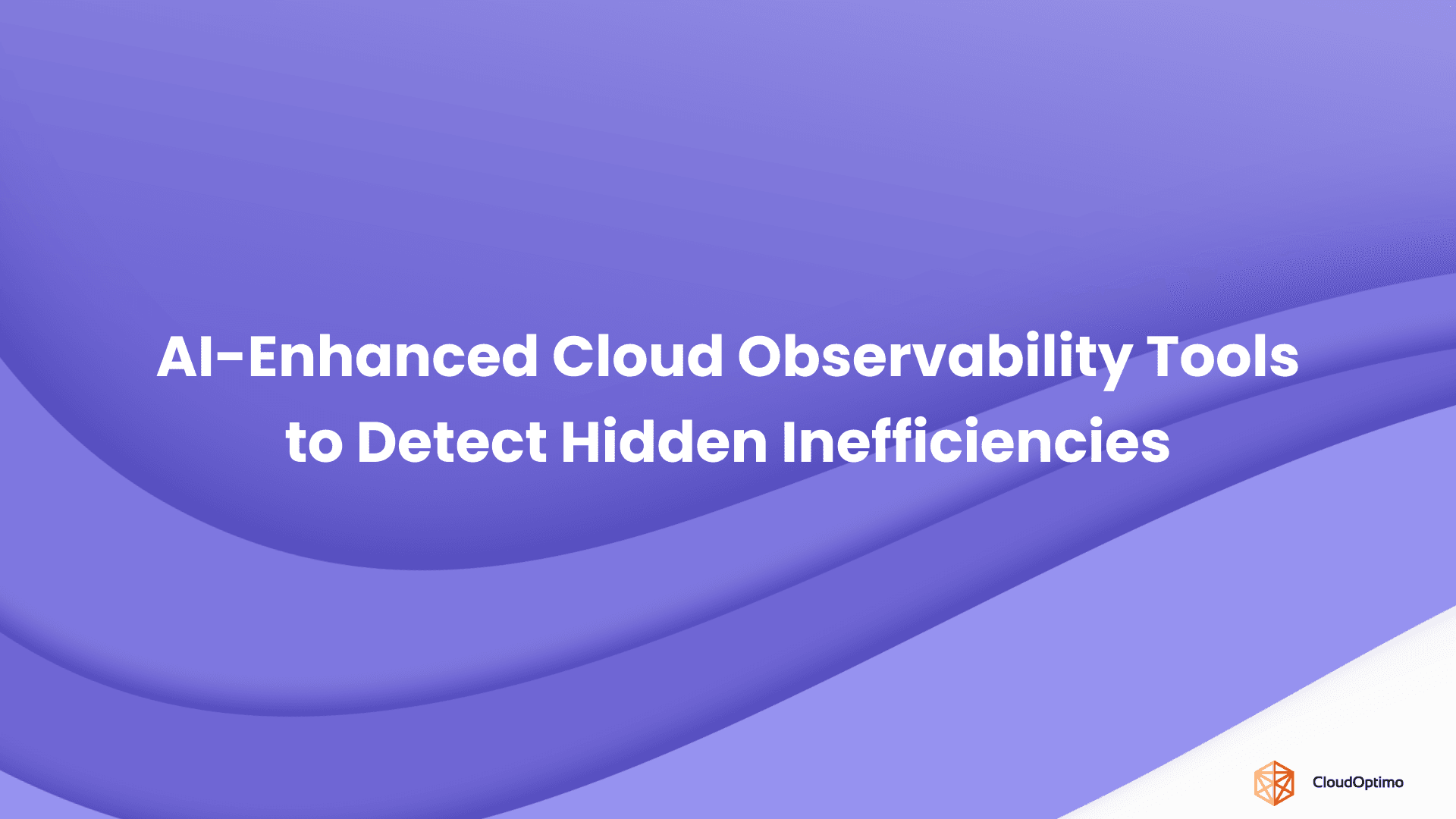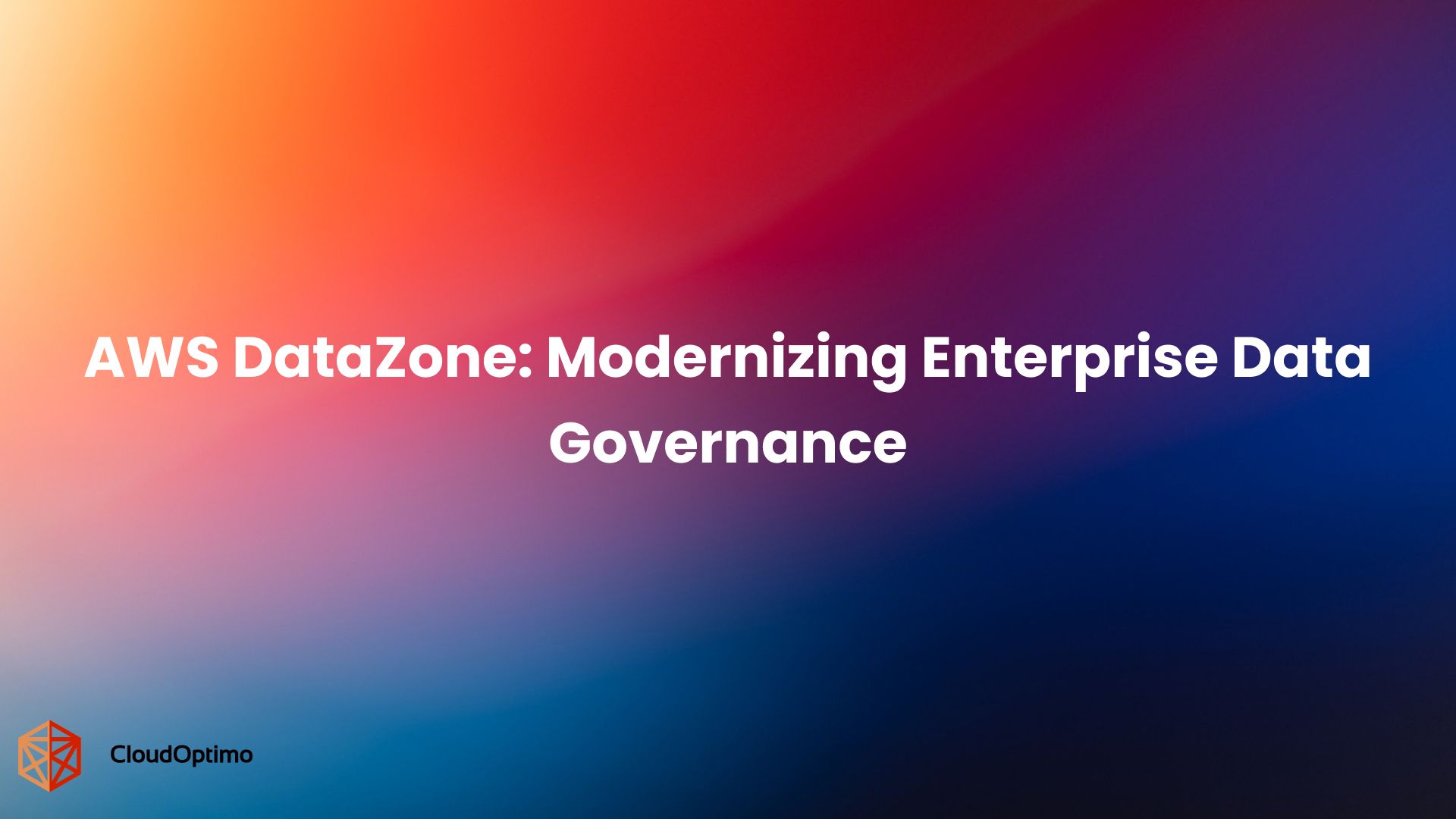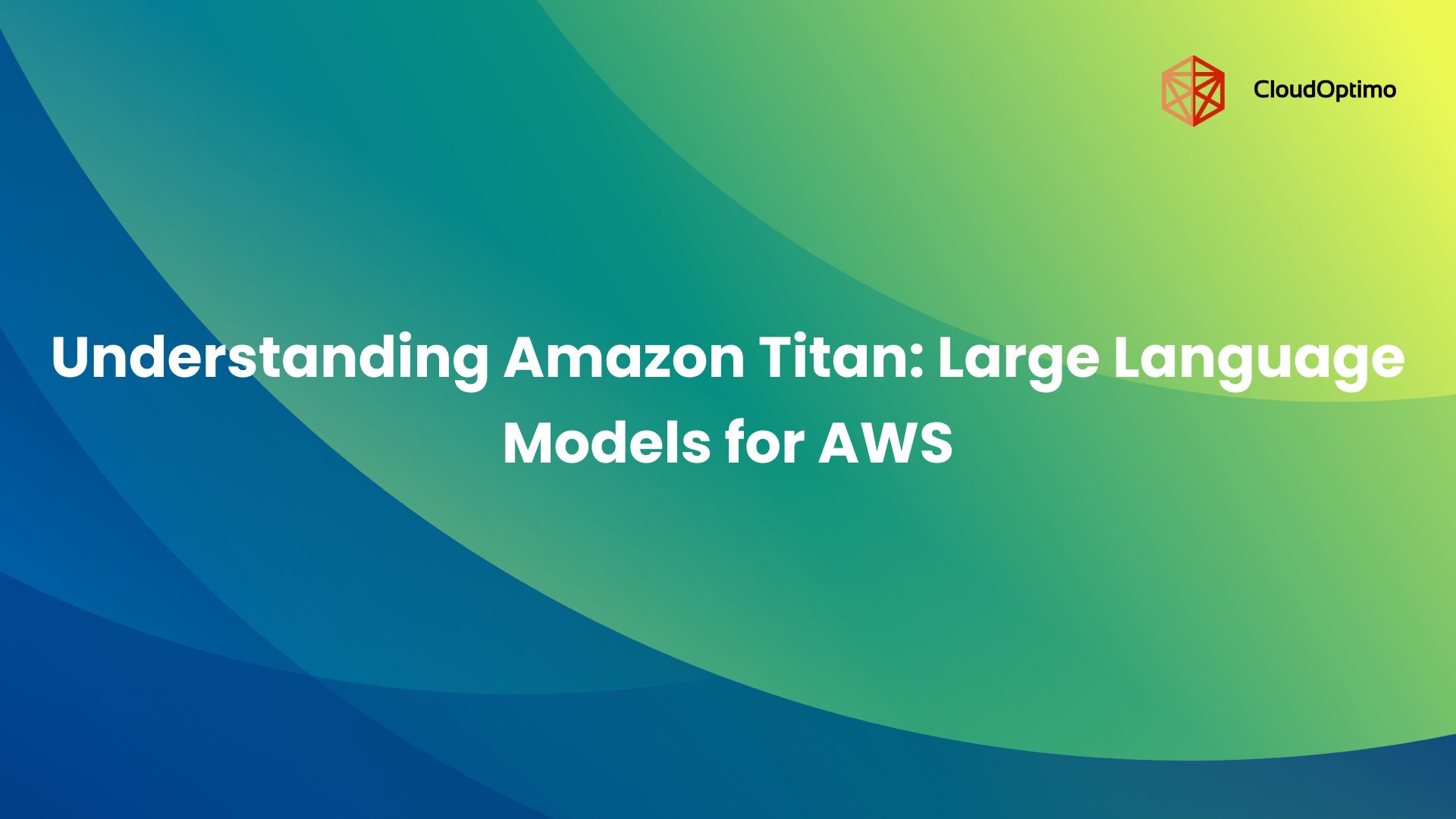At first, adopting a multi-cloud strategy using multiple cloud service providers simultaneously appears to be a straightforward path to greater flexibility, improved resilience, and reduced vendor dependency. Many organizations adopt a multi-cloud strategy to take advantage of the unique strengths offered by different platforms, aiming to optimize performance and innovation.
However, what looks simple on the surface often hides many challenges. Managing multiple clouds can create a complicated mix of tools, rules, and teams that can be difficult to coordinate. These challenges often only become clear after problems arise.
To make multi-cloud work well, organizations need to understand these hidden complexities. The first step is knowing exactly what multi-cloud means and how it is different from other cloud models.
Understanding Multi-Cloud Architectures
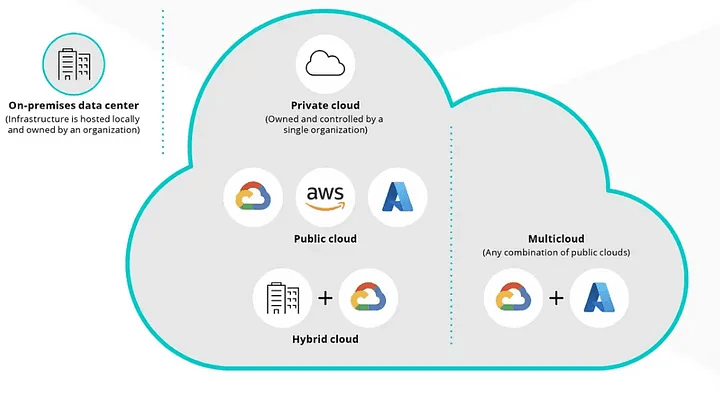
Source - Medium
A multi-cloud architecture means an organization uses two or more public cloud providers, such as AWS, Microsoft Azure, or Google Cloud Platform, to run different parts of their business applications or services. Rather than relying on a single cloud, workloads are spread across multiple platforms based on specific needs like performance, cost, or available features. This approach often allows different teams or departments to select the cloud environment that best fits their projects, creating a decentralized cloud landscape.
This differs from a hybrid cloud model, where public cloud resources are combined closely with private infrastructure or on-premises data centers to work as a unified system. Hybrid cloud focuses on seamless integration and interoperability between environments, while multi-cloud emphasizes diversity and flexibility by using multiple independent clouds side by side.
| Feature | Multi-Cloud | Hybrid Cloud |
| Definition | Using multiple public cloud providers independently for different workloads or services. | Combining public cloud(s) with private or on-premises infrastructure in an integrated environment. |
| Architecture | Decentralized workloads are spread across separate clouds. | Integrated, public, and private clouds work together as one system. |
| Primary Goal | Flexibility and avoiding vendor lock-in by leveraging the strengths of multiple providers. | Seamless integration and consistent management between on-premises and cloud environments. |
| Use Case Focus | Different teams or projects choose clouds based on specific needs. | Extending existing data centers with cloud resources for scalability or modernization. |
| Management Complexity | Higher due to multiple independent cloud platforms. | Moderate; requires integration but is managed as a cohesive environment. |
| Data Movement | Often involves separate data silos; less data transfer between clouds. | Frequent data exchange between private and public clouds requires robust connectivity. |
Why Do Organizations Choose Multi-Cloud?
Several strategic and business drivers motivate the adoption of multi-cloud:
- Avoiding Vendor Lock-in: Relying on a single cloud provider can limit negotiating power and flexibility.
- Regulatory Compliance: Data residency laws may require certain information to remain within specific geographic regions.
- Improved Resilience: Distributing workloads across clouds reduces the risk of downtime caused by failures in one provider.
- Optimized Performance: Different clouds may excel in particular services—for example, Google Cloud in AI, Azure in enterprise integration.
While these benefits are compelling, they come with important tradeoffs.
The Hidden Operational Complexities of Multi-Cloud
While multi-cloud offers flexibility and choice, it also introduces significant operational challenges. Managing different cloud platforms means dealing with varied tools, policies, and technical requirements. Without careful coordination, these differences can lead to inefficiencies, security risks, and increased costs.
The key operational complexities include managing diverse cloud environments, aligning governance across teams, handling data portability, and addressing latency and performance issues. The table below provides a brief overview of these challenges, which will be explored in more detail in the following sections.
| Operational Complexity | Description | Potential Impact |
| Diverse Cloud Environments | Different management consoles, APIs, and service models per provider | Increased operational overhead and duplicated effort |
| Governance and Policy Alignment | Lack of unified policies across teams and clouds | Inconsistent security and compliance risks |
| Data Portability and Management | Difficulties in transferring and synchronizing data between clouds | Higher costs, latency, and regulatory challenges |
| Latency and Performance Tradeoffs | Network delays and loss of native cloud optimizations due to abstraction | Reduced application responsiveness and user experience |
The following sections will examine each challenge in greater detail, providing insight into its causes, consequences, and strategies for effective management.
Managing Diverse Cloud Environments
One of the main complexities of multi-cloud environments lies in the differences between cloud providers. Each provider offers unique management tools, user interfaces, and service configurations. This variety creates complexity in daily operations, as teams must juggle multiple ways to handle security, networking, storage, and application deployment.
This division often leads to repeated work, inconsistent setups, and a higher chance of mistakes. Without a coordinated approach, operational efficiency suffers, and the risk of misconfiguration or security gaps grows.
However, organizations that recognize this complexity can transform it into a strategic advantage by:
- Standardizing processes: Defining common workflows that apply across clouds helps reduce operational friction.
- Adopting automation: Leveraging automation tools enables consistent deployment and management of resources, regardless of the underlying cloud platform.
- Consolidating visibility: Using centralized monitoring and management tools helps teams gain a unified view of their multi-cloud environments.
- Encouraging collaboration: Cross-training and coordinated team efforts reduce silos and improve overall operational maturity.
By addressing these challenges head-on, organizations improve control, reduce risks, and unlock the true flexibility that multi-cloud promises.
Governance and Strategic Alignment
In a multi-cloud environment, the absence of centralized governance often leads to inconsistent cloud usage across different business units or teams. Each unit may adopt its own cloud tools, policies, and security practices without coordination. This creates inefficiencies and can cause conflicting security controls, leaving gaps in compliance and increasing the organization’s overall risk exposure.
Effective governance requires establishing clear policies and standards that apply across all cloud environments. When governance is aligned strategically:
- Security policies become consistent, reducing vulnerabilities.
- Compliance requirements are easier to enforce and audit.
- Resource usage is optimized, preventing waste and duplication.
- Communication between teams improves, reducing operational silos.
Without this alignment, multi-cloud efforts can become scattered and harder to manage, which can cancel out many of the benefits we hope to achieve.
Data Management Challenges
Transferring and managing data across multiple cloud providers presents significant challenges. Data movement between clouds is complex, costly, and can introduce latency. Additionally, data residency laws and industry regulations often restrict where data can be stored or processed, adding legal constraints to technical difficulties.
Coordinating data across different cloud platforms makes tasks such as analytics, reporting, and backup more complicated. Security risks increase as data moves between networks, and latency impacts application performance.
Organizations must carefully evaluate:
- The cost and performance impact of moving data between clouds.
- Compliance with data residency and privacy regulations.
- The technical feasibility of synchronizing distributed datasets.
- The security measures are necessary to protect data in transit and at rest.
These challenges mean that multi-cloud data strategies require careful planning and robust solutions to avoid operational bottlenecks and legal risks.
Latency and Performance Tradeoffs
Operating services across multiple cloud platforms often introduces increased network latency and overhead. Data and requests must travel between clouds, which can slow down response times and affect the user experience. Furthermore, to enable workload portability, organizations often rely on abstraction layers or third-party tools, which may limit access to cloud-native features and optimizations.
This tradeoff impacts critical business applications, especially those requiring real-time processing or low-latency responses.
To mitigate these challenges, organizations should:
- Identify workloads sensitive to latency and prioritize their placement on appropriate clouds.
- Avoid over-abstraction that compromises performance or functionality.
- Design architectures that minimize cross-cloud communication where possible.
- Monitor performance continuously to detect and address latency issues promptly.
Balancing portability and performance is essential to realize the full potential of a multi-cloud strategy.
Security, Risk, and Compliance in a Multi-Cloud World
Security becomes more complicated in a multi-cloud setup because each cloud provider does things differently. There are separate tools, dashboards, and ways of managing security, which makes it harder to keep everything consistent. When each environment is managed in isolation, it becomes easier to miss a threat or respond too slowly.
For example:
- Separate security tools mean teams need to check multiple places to detect issues.
- Different logging systems and response procedures can delay how fast incidents are handled.
- Without one central system to manage user access, accounts can be over-permissioned or forgotten, putting data at risk.
- Each provider defines your responsibilities differently, which can lead to gaps if you're not fully aware of what's covered and what isn't.
Solving this starts with simplifying how security is managed across clouds. Use one central identity system for managing user access. Create shared security standards and apply them consistently. Choose monitoring tools that can collect information from all environments into one place. With these steps, security becomes easier to manage and more reliable, regardless of how many clouds you're using.
Getting Ready for Change and Workforce Challenges
Running on multiple clouds doesn't just require the right technology—it also demands the right people and processes. But finding experts who understand more than one cloud platform is difficult. Skilled professionals are in high demand, and teams often end up stretched thin or reliant on outside help.
This leads to slow project delivery, unclear responsibilities, and occasional tension between development, operations, and security teams. The issue is often made worse by too many tools being used for monitoring, deployment, and troubleshooting. When these tools don't work together, it’s harder to see what’s going on or fix problems quickly.
To manage this, organizations should focus on a few key areas:
- Invest in cross-training: Encourage teams to build a basic understanding of each cloud, even if they specialize in one.
- Simplify toolsets: Fewer tools, used more effectively, reduce confusion and improve visibility.
- Align teams early: Ensure development, operations, and security work together from the start, not just when something breaks.
Over time, these steps help build internal capability and reduce the dependency on external consultants. The goal isn't to master every platform but to be prepared, coordinated, and focused on solving problems as one team.
Financial Complexity and Cost Governance
As organizations expand across multiple cloud providers, maintaining clear financial oversight becomes increasingly difficult. What begins as a flexible infrastructure model can evolve into a fragmented environment where spending is difficult to track, explain, or control.
The challenge isn't just technical; it's organizational. Different teams may spin up resources in different clouds, but without a shared way to view and understand costs, financial decision-making slows down. Questions like “Which project drove last month’s spike?” or “Can we afford to expand this service?” become harder to answer.
More importantly, delayed visibility leads to delayed action. Unused resources stay online. Oversized services remain untouched. Budgets become reactive rather than proactive.
To manage spending effectively, organizations should focus on building a unified view of their cloud costs. This means:
- Consolidating cost data across all cloud providers into one place.
- Mapping expenses to teams, projects, or business units to understand who is using what.
- Setting budgets and alerts to catch overspending early.
- Regularly reviewing unused or underused resources and turning them off or resizing them.
By taking a more structured and proactive approach to cloud cost management, organizations can avoid waste, plan more accurately, and make better decisions about where and how to invest.
Evaluating Suitability and Strategic Fit
Adopting a multi-cloud strategy should not be assumed as the default path for every organization. While the technical feasibility may be clear, the strategic alignment with business objectives is equally important.
When Multi-Cloud Is Appropriate
There are specific scenarios where a multi-cloud approach can deliver clear value:
- Regulatory and Data Sovereignty Requirements: Operating in regulated industries may require data to reside within specific geographic regions, necessitating multiple providers.
- Post-Merger or Acquisition Integration: Organizations may inherit cloud platforms and need to maintain continuity while aligning systems.
- Access to Specialized Capabilities: Leveraging unique strengths from different providers, such as advanced AI services, analytics platforms, or enterprise integration tools, can enhance performance or innovation.
In such contexts, a well-architected multi-cloud strategy can support compliance, resilience, and competitive advantage.
When to Reassess or Consolidate
However, a multi-cloud environment should be actively evaluated over time. The following signals may indicate the need to reconsider the approach:
- Escalating Costs Without Clear Returns: When financial complexity increases, but the business value does not scale in parallel.
- Operational Inefficiencies: When teams struggle with platform fragmentation, delayed delivery, or inconsistent standards.
- Security and Compliance Gaps: When governance cannot be enforced uniformly, it increases organizational risk.
Consolidating cloud platforms does not signify strategic failure. Instead, it can reflect a realignment of priorities toward simplicity, control, and long-term efficiency.
Key Patterns for Navigating Multi-Cloud Complexity
The best organizations don’t run from complexity—they manage it with intent.
Best Practices for Managing Multi-Cloud Complexity
Mature organizations approach multi-cloud with strategic intent by:
- Centralizing Identity and Access Management: Implement unified IAM policies and single sign-on across clouds.
- Automating Infrastructure and Deployments: Use Infrastructure as Code (IaC) to manage resources consistently.
- Establishing Cross-Cloud Observability: Deploy monitoring and logging tools that provide unified visibility.
- Implementing Unified Financial Operations: Track and optimize cloud spend across all providers.
- Investing in Cross-Training and Certifications: Build internal expertise to reduce dependency on external consultants.
- Setting Governance Before Growth: Define policies and guardrails to ensure consistent, secure cloud usage.
Avoiding Common Strategic and Operational Pitfalls
Without a clear strategy, multi-cloud can lead to fragmentation and inefficiency. Common missteps include:
- Prioritizing Portability Over Performance: Over-engineering for cross-platform compatibility can prevent teams from leveraging provider-specific capabilities.
- Unrestricted Cloud Selection by Teams: Allowing individual teams to choose platforms independently leads to duplication, inconsistent architectures, and increased operational overhead.
- Relying on Abstraction Layers: Excessive abstraction may reduce complexity on the surface but often sacrifices visibility, control, and performance.
A more sustainable approach focuses on:
- Establishing Governance Before Expansion: Define policies, controls, and architectural standards early to avoid retrofitting later.
- Implementing Centralized Guardrails: Use standardized templates, configurations, and controls to maintain consistency and reduce risk.
- Aligning Multi-Cloud Choices with Business Objectives: Adopt additional platforms only when they support clearly defined goals, such as regulatory compliance, regional availability, or specialized capabilities.
By applying these patterns with discipline, organizations can reduce risk, improve efficiency, and ensure that multi-cloud complexity is managed intentionally, not inherited by default.


